Bipin R. Shah and Jennifer Barnes
Comparisons and contrasts of Buddhism and Jainism
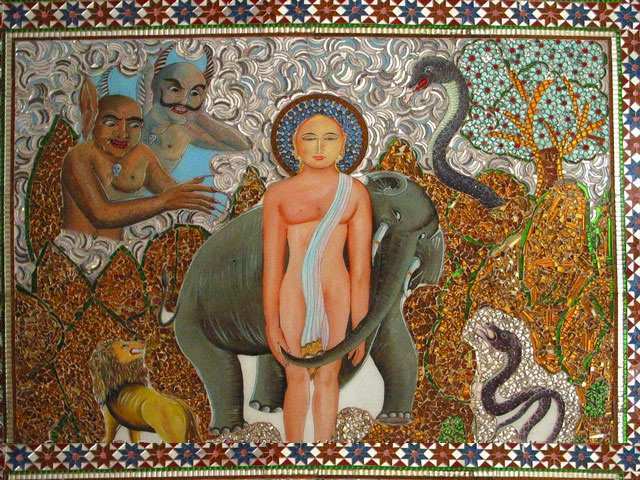 | 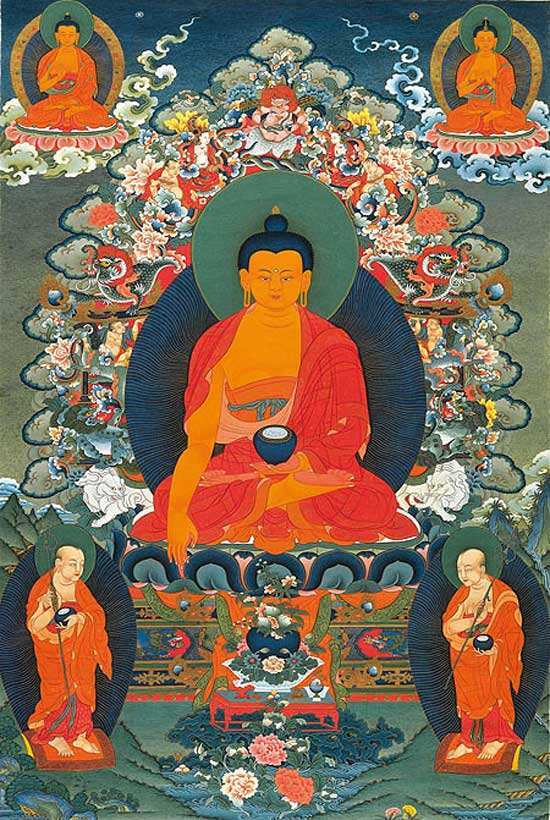 |
Mahavira (Jainism) | Buddha (Buddhism) |
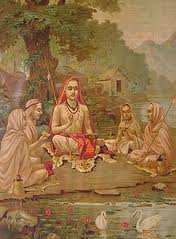 | 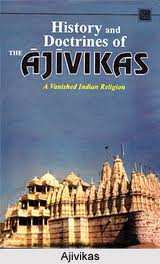 |
Vanyavas (Hindu) | Extinct Tradition |
Shramanic Tradition of Ancient Saraswati Civilization
Comparisons and contrasts of Buddhism and Jainism from a modern and collective vantage point.
Non-Vedic Tradition of India-Mahavira, Buddha and Gosala
Shramanic Tradition among Indus-Valley Civilization:
It is quite evident from what is referred to as the "Yogi" seal found at the Harappa site, some kind of Shramanic tradition as described by such scholar as "Rikhavite" in corrupted native language and interpreted by experts may have existed in the Indus-valley civilization of India. The first Tirthankara "Rishabha" is praised and mentioned in the revered Rig-Vedic hymns and other Purana texts. Rishabha is always mentioned as "Lord of the Lords" much in the same way God Shiva is referred by many Vedic Purana texts. The virtues of Rishabha as a man who showed the first human agriculturists of the world the arts of seeding and raising agricultural products reminds us of the God Reseph of the Semites of Sumerian culture. He is described as the "God of food, locust, plague and famine". God Reseph appears to be made up of half of Jain Tirthankara Rishabha and half Hindu god Shiva all packaged together. When Shiva is angry, he is the destroyer. Rishabha of Jaina represents the only extracted form of good Part of Shiva.
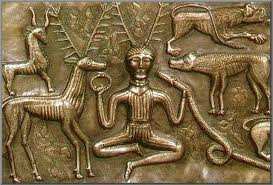 | 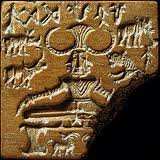 | 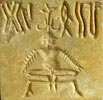 |
Shramanic figure IV | Reseph Of Semite | Yogi position of IV |
God Reseph was similarly worshipped by early Mesopotamians and Egyptians. K.C. Jains (26) in his book "Lord Mahavira and His Times" mentions that Rishabha was a real historical person and he was called "Keshi" Shramana. Lord Reseph is believed by most assyrilogists to be mythical.
Jaina always maintains that Rishabha and Hindu God Shiva are one and the same. Shiva is mentioned as the "Lord of the Lords" in Vedic texts and recognized as one of the "Trinity" of Hindu gods. Hindu texts further states that Shiva is an omniscient yogi, and lives an ascetic life on Mount Kailas. By the way all the Tirthankaras are considered as omniscient: "A librated soul who knows past, present and future". This comparison is striking and further suggests that the religion always travels with the trade. The Buddhism and early Christianity spread because of trades and migration. There are perfect examples here in United States where we have Jewish temples, Jain temples, Muslim Mosques and Christian churches. This is a direct result among peoples with different beliefs, cultural heritages and traditions. This was also most certainly true during the early history of the Indus valley people. Their trades among other ancient civilization exchanged more than their manufactured products, they also influenced each other's belief systems, their religious ideas, their epic stories and probably the actual words, languages and scripts. So, when we debate as historians about the birth place, identification or the nationality of Rama, Budhhas or Jesus, we have to ask ourselves the basic question, does it matter any more? Their teachings and ideas are more important for humanity and the life on this planet than trivial matters like the birth place are they not? This is the essence of similarities and differences that are superficial but in reality it is the same ideas expressed in different form and from widely varying perspectives. However, our interest and curiosity of the past mysteries compel us to write about the histories that we never lived ourselves.
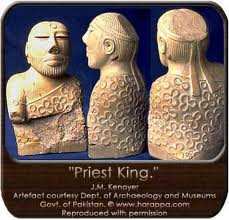
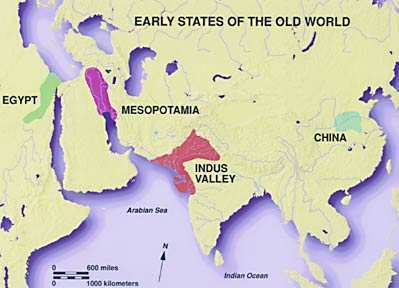
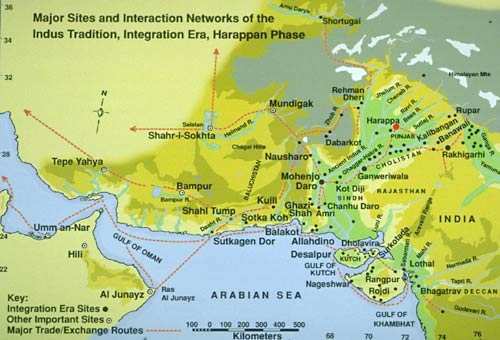
Ancient Civilization-Trades that lead to exchange of ideas
When we analyze the history using science and logic, we find that the history of the past sometimes lies in understanding the current events of today's world.
The trades contacts they enjoyed with Mesopotamia and Megan (Oman) that lead to trade with Pharaoh Menes of Egypt (Menes was one of the "Manu" as suggested by Austin Waddell). This clearly suggests that religious ideas flowed between these ancient civilizations and continued among new civilization throughout time.
It is possible that Vedic religion only worshipped Rig Vedic Gods like "Vayu" winds-storms, (Varun, Ditya-Mitra) Sun God, Indra-God of Thunders, Agni-God of Fires ended up incorporating Indus valley gods and deities and "Vratya" tradition of the tribal and natives of India that observed different rituals probably different then Harrapans and Vedic Aryans all combined to the current form of Hinduisms. It is unthinkable that on one hand, we can accept the idea of the trade relationship among these ancient civilizations because of the abundance of the archeological evidence but on the other hand we are hesitant to ideas of the cultural and religious exchanges among ancients.
Some of the perplexing similarities we find here is that Rishabha sign is the 'Bull, Shiva's sign the 'Nandi' (small bull or cow). Reseph of Semite used 'Gazelle' like figure as a sign symbolizing domesticated animals for agriculture. This is comparable to Jesus' sign which was a 'fish' as used by ancient Christians.
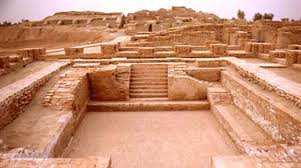
Harrapan bath complex probably for ritual purposes or water storage
The Hindus have a tradition of taking holy bath in the river Ganges to wash away their sins or "karmas". All riverine based civilization that was sustained by agriculture farming always worshipped and considered the water of the river as holy and life sustaining. Harrapan culture shows similarities and use of bath complexes. We know from our current knowledge of Hindu culture that they would never think of having a facility for unisex bathing. So, only purposes that can be interpreted here is either a water storage tank or some religious ritual. We do not know the scripts or Harrapan language as of yet and we don't have to know this simple common sense explanation.
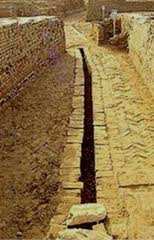 | 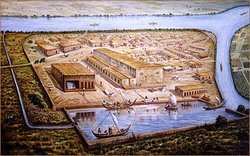 |
Harrapan Aqueducts (both ways) | Artist depiction of Lothal (Harrapan) |
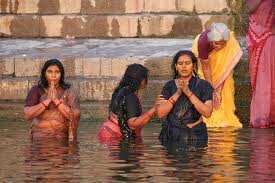
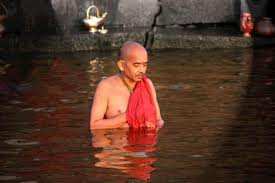
Holy Ganga Pilgrimage
We can conclude that the current form of present Hinduism has evolved by being inclusive and incorporating other religious tradition that it encountered from its past contacts from its "original religious practices". Obviously, we never heard about Avestan people taking religious dips in the river. We know Christianity used the river for baptism. Similarly, we can argue that Jainism and Buddhism have evolved from its original state to its current state of temple worshipping. Earlier in their original state, Jainism and Buddhism remain agonistic and decried the idol worshipping of Vedic people and rituals. Today's Jainism and Buddhism adapts to temples based worshipping. Over the years, every tradition has compromised that makes up what is today's culture of India. This is a mixture of many Genes and DNA analysis should confirm.
One example of this cultural continuity that comes to mind is why every major Harrapan city had public baths revealed in excavation? Was that for religious purposes or common bathing facility for all sexes? Why do the Hindu take their annual plunge into the sacred waters of the Ganges? During the ancient Harrapan days, all major Harrapan cities were fed by the mighty Saraswati river systems that supplied their agricultural lands, passing through the urban area, everyone felt the need to purify themselves by a visit to bathing facility as it may have contained the "holy water" as part of their ritual? We cannot be so sure but we find no evidence of public bathing system anywhere else in subsequent Indian culture with the exception of water storage tanks.
The related concepts of "Samsara" and "Moksha" found in both Jainism and Buddhism were imports from these ancient Shramanic traditions. We all know the story of Alexander who encountered a yogi that may have followed "Samsara" tradition of Jaina. This yogi by choosing his own timing of his death is a perfect example of Shramanic tradition of Samsara. This was undoubtedly a non-Vedic tradition and later on adopted and incorporated into the Vedic religion. The concept of Moksha is found in all religions of India. The depiction of the nude male figures of many Harrapan seals "in standing or sitting meditative positions" was prevalent in the Harrapans Shramanic tradition.
The present Hinduism subscribed to some form of Shramanic traditions. The Indian Purana is filled with stories when Kings or rich merchants abdicated all their attachments of values and adopted "vanyavas" or "Tapovan" to attain the salvation. However, the "Vanyavas" or "Tapovan" of monastic life was selected during the later stages of life and the wives were allowed to accompany them, so vows to chastity were never required.
Mahavira, Buddha and Gosala- adopters of Shramanic cultures:
Mahavira (24th Tirthankara of Jainism) and Gosala (founder of Ajivika) were considered to be the senior contemporaries of Gautama Buddha. Buddhist text referred Mahavira as an "enlightened one", while Jaina texts makes no reference of Buddha. The reason for this could be that most of the current texts of Jaina were produced several hundred years later than Buddhist texts and rivalries continued among some of their followers all the way up to 7th century AD, when Buddhism
was in decline in India while Jainism was on the rise. Although, their own religious ideology and beliefs were inspired by each other's and sometimes from senior Gosala, they seem to differ on monastic life. Over the period of years, they both ended up incorporating some of the prevalent tradition of Indus-valley's traditions that were deeply embedded in to pre-Vedic societies of tribal and urban natives. They were all labeled as a group of "heretics" initially by Brahmins. The common thing, they all shared together was their repulsion towards the Vedic Gods and their sacrificial rituals, that included "Asvamedha" (Horse sacrificial rituals of central steppes of Indo-European people). Vedic Brahmins labeled them as a group of naked ascetics who were non-religious agonist. Once their followings increased among the lower castes of Vedic and non-Vedic origin people, the ruler acted as a political necessity to make them inclusive. The rulers of Magadha during their lives attended all of their discourse and provided necessary facilities and sometime patronized them personally by sending personal invitations. Over the period of their lives, their followers and patronizing rulers appear to sharpen their religious doctrinal issues. (20-21).
Jayaram (12) believes that The Ajivikas existed as an organized ascetic sect in ancient India long before the birth of the Buddha and Mahavira and enjoyed widespread popularity among people who lived on the fringes of the Vedic society such as low caste people often referred as "Dasas" by Hindu texts. Ajivikas promoted the self surrender to the "flow of life" as dictated by the will of God-refereed then as the tradition of "Nyati". It was a doctrine that emphasized "flowing with the flow" rather than against it. The early concept of "Vanyavas", "Tapovan" or "renunciation" of life as advocated by both Jainism and Buddhism with later stages of Hinduism agreeing essentially with this doctrine of the Ajivikas. To this extent, Ajivikas, Jainism and Buddhism borrowed this concept of Shramanic traditions that existed from the Harrapan times.
Time of Budhha and Mahavira:
Buddha and Mahavira spent some time in the company of Makkali Gosala, who came from a lower caste origin, Mahavira and Buddha both belonged to the Vratya clan Kshatriyas but not the Vedic clan. The Ajivika sect (because of its own ideological bend) became a minority sect and only survived until 14th century as an independent sect and then merged into the Digamabara sect of Jainism. There is not much known of their written religious codes or tradition other than what little we
can learn from Jaina and Buddhist texts. However, the Ajivika sect was one of the major competing sects attracting followers during Mahavira and Buddha's time from lower castes. Rajataragini- volume 1, mentions the influence of Ajivika Bhutamati, who became teacher of a Kashmir King. The rise and origin of these traditions can be easily attributed to excesses committed by Brahmanism of the 6th century BC by allowing the infiltration of undesirable Vedic rituals that were becoming a huge social burden to lower castes communities. Every social event of importance required necessary ritual and payment of fees to a Brahmin priests. Interestingly enough, the people who gave a lift to all these new religions were disfranchised Brahmins who could not get into the dominating system controlled by so few. They themselves became the propagator of the ideas of Jainism and Buddhism as indicated by the names of disciples of Mahavira and Budhhas. The majority of them belonged to Brahmin castes.
Parshvanatha's Jaina Tradition and the role of main branch of Vedic Kshatriyas:
One of the common elements that emerged from the study of Buddhist and Jaina texts was that Mahavira and Buddha's family followed the tradition of Parsvanatha (Parcva), 23rd Jaina Tirthankara who lived around 250 years prior to Mahavira and Buddha. Both Mahavira and Budhhas were familiar with the established tradition of Parsvanatha. It should be noted that both words: "Jainism" and "Buddhism" were inserted during the later stages of Indian history. During their time and in parallel to Mahavira's order, there was an established order of 23rd Tirthankara Parsvanatha based in Indus region that was then headed by Kesi Shramana (same name as Rishabha). Mahavira added the 5th vows of monastic tradition of Parshavanath and that required complete abandonment of any items of material value including personal clothing. That was the only change Mahavira implemented.
Oral Traditon of Teaching and state of canonical Text:
Ancient India's early history of Jainism and Buddhism were embodied in its oral traditions and teachings; perhaps they were considered as necessity due to fear of rejection and prosecution by main stream Vedic religion. Early Christianity went through very similar experiences. We really do not have a very accurate picture of
when the actual writing of the religious cannons in the written form began. The Hindu texts were similarly transcribed during the later period of the history. The level of accuracy of orally transmitted memory and subsequent translation into the written form and the related chain of custody issues brings the various issue of authentication of canonical texts. Jaina record indicates that first writing of Jaina texts began sometimes in later 4th century. The first written evidence of Indian epigraphy is in Asoka's edit in Brahmi script. The written evidence of Pali or Jaina Prakrit is much later.
The teachings of Mahavira were transmitted from one teacher to another through lineage of successive teachers called "Parampara", that was always subject to individual interpretation and or representation. Our knowledge of these early teachers' lives and their religious doctrines are therefore limited. As per Jaina texts, all of the Jaina Tirthankaras' births were devised to illustrate their divine status that started out with some kind of auspicious dreams to their mothers. The magical transformations of embryos to their mothers to impart the Tirthankara child a special status of Khatriya sounds similar to other stories in Bible. We do not know what a writer can do with his pen several hundred years later when the authencity of the writing cannot be verified by anyone else and somehow it gets inserted into the texts. We find these problems with all the religions. Even the Holy Koran was orally transcribed.
Saka Group of central Asia (4) (12)
Some of the Saka tribes that lived in the vicinity of ancient India and Avestan-region of Iran were either influenced by Vedic or Avestan culture. All Sakas were horse nomads and warriors for hire. They buried their dead in barrows or mound tombs called 'Kurgans' that resembles a stoned 'stupa' of Budhhas or early 'Chetiyas' of Jaina. They worshipped the dead along with other Demi-Gods and Goddesses' like Yaksha-Yakshini.
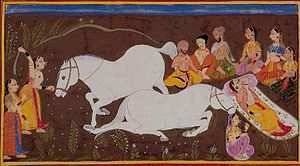 | 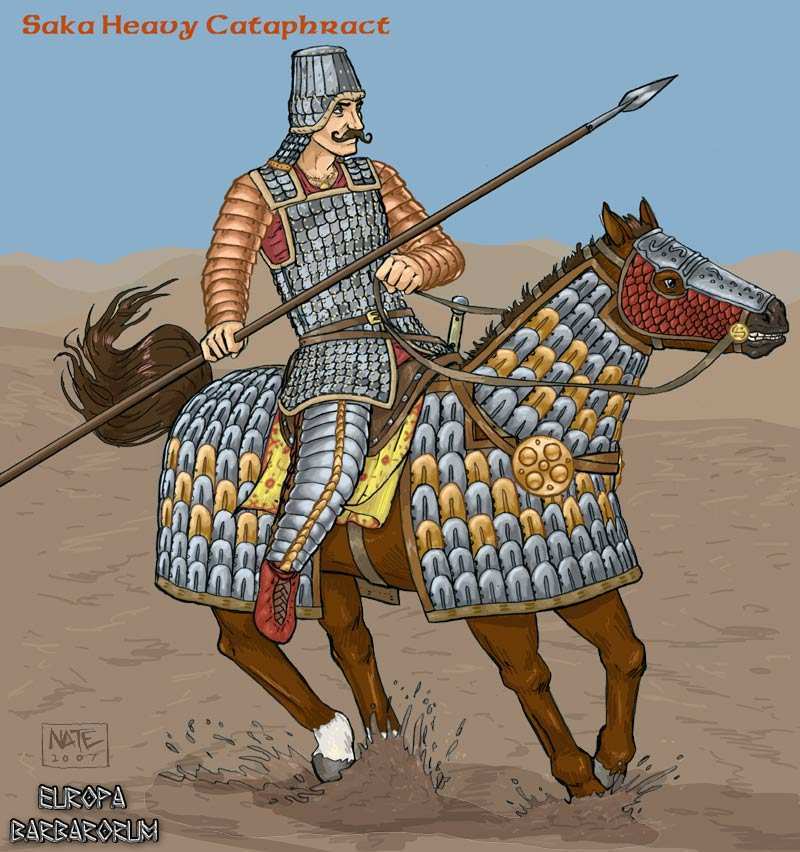 | 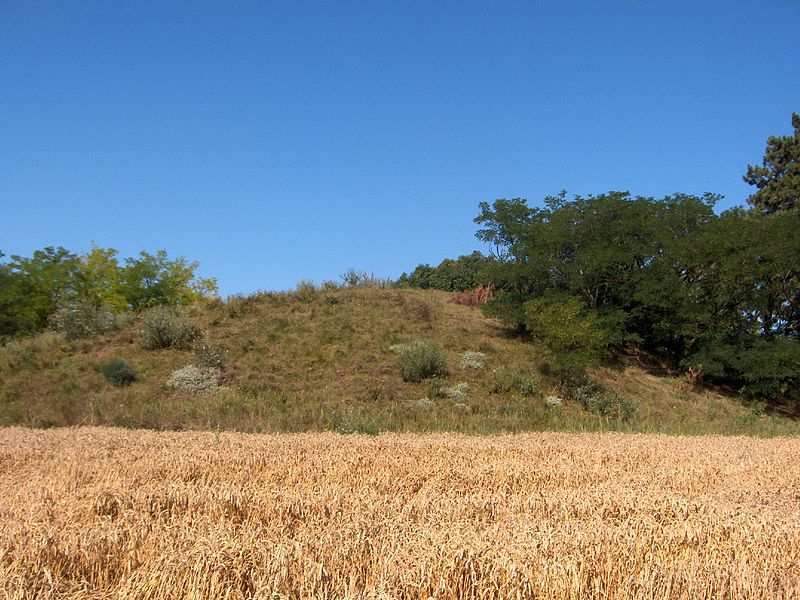 |
Painting of Vedic Asvamedha | Saka mercenary of Persia | Kurgan Mound-Ukraine |
Buddha belonged to Indian Saka tribes; he was called "Sakya Muni" and he was called "Sakya Simha" as a Royal Prince. They commingled with Vedic people through marriage and perhaps spoke the mixed language that may have formed the earlier version of Prakrits of ancient India or "Arth-Magadhi". Mahavira belonged to "Jnatri" clan of "Lichhavi" similar to Saka, Pahlva, Parada and Kamboj tribes of "sakai" group. Most of the native tribes of India during the Vedic period practiced 'Vratya" traditions of worship. This Vratya tradition is now well integrated in all the major religions of India. See the links below to undertand more on this native tradition:
Vratya Tradition:
Vratya (Demi God and Goddesses) are now portrayed as protector of the divine entities. They are called "Yaksha-Yakshini" in Jainism and Buddhism. Similar worship and traditions are found in the present Hinduism with the concepts of Deva and Devi such as "Ambika Devi", "Chamunda Devi", "Padmini Devi" "Saraswati Devi" and many others. The current beliefs are if these entities are worshipped then favors are granted for access to the supreme beings.
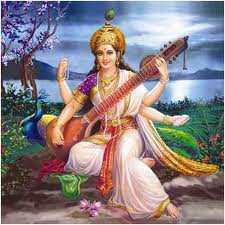 | 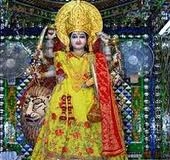 | 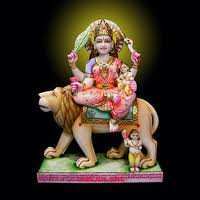 |
Saraswati | Chamunda | Ambika |
The Jainism and Buddhism employ "Yaksha-Yakshini" form of Vratya practices. Ambika is also a favorite lady of worship. Yaksha-Yakshini acts as a protector of temple icons, Tithankaras and Budhhas. They are worshipped as Demi-God and Demi-Goddesses. The most famous Yaksha is "Bhairav" (Bhavanpatti) who is always present at most Jaina and Buddhist shrines and also at Hindu shrines. See more information on this link.
It is therefore logical to conclude that how these ancient thoughts were derived and how they were allowed to be integrated through intermingling and marriages among various ethnicities that make up today's India. India today is a country that is bound by common culture, tradition, and values and acted as a way station for ancient humans and therefore a home of all humanities as shown by DNA studies. India was one of the cradles of ancient thoughts and civilization. The present status of world's ancient regions still exists today in a compromised status in India, each borrowing ideas from the others.
Most of the disciples of both Mahavira and Budhhas came from Brahmin classes and were educated people of priestly origin of ancient India that gave them legitimacy with the rulers and masses of ancient India. The common laity and followers were the disfranchised castes of Sudra and mixed origins who were non-Vedic in their roots. They shared the common cultural and religious practices and language affinities.
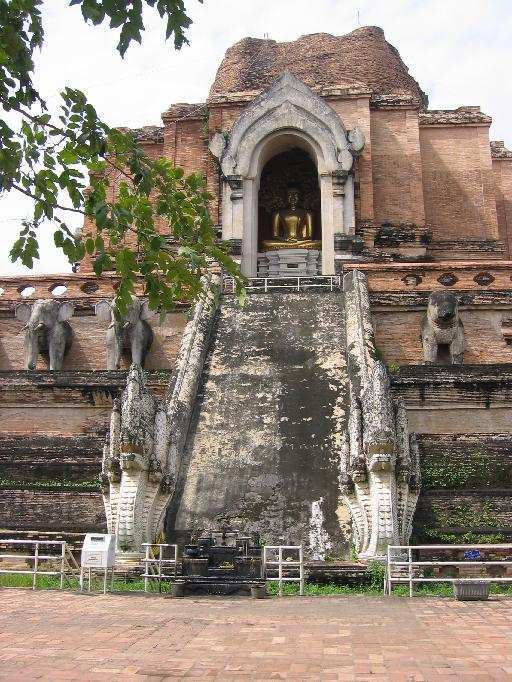 |  |  |
Buddhist Stupa | Jaina’s Cetiya | Belarussia’s Kurgan Mound |
Use Of Gotra as Surnames:
Mahavira's father's name was also Siddhartha as was the first name of Gautama Buddha. The name Gautama may come from Kula just like meaning Gautama Rishi's Kula. The word "Kula" and the "Gotra were interchangeably used in ancient India.
Archeological Evidence
The subject of geographical location has become extremely important for Jaina as well as Buddhist historians. Mahavira's and Buddha's history is so much is interconnected, as they visited the same places in their life time and met the same personalities while spreading their message. The newly discovered archeological sites in Afghanistan and Swat valley are now open to question and scrutiny of others should be done to identify the exact geography. How successful we will be depends on the preservation. Due to current geopolitical climate in the sub continent, the hope is slimmer.
Magadha is as old as the Mahabharata when Jarasangh first ruled there and mounted raids on Krishna's Mathura. This forced Yadav clans to migrate to Dvaravati that is now equated with Dwarka. The exact location is still unknown.
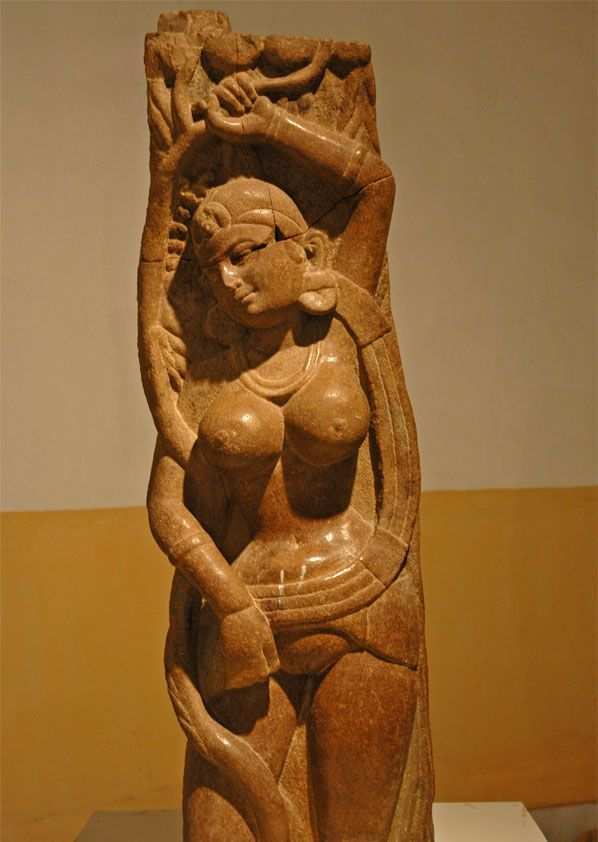 |  |  |  | 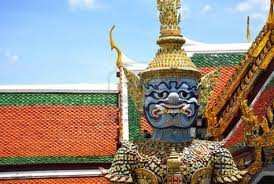 |
| Yakshini- 3rd cent.BC | Yaksha-3rd cent. BC | Yaksha 2nd Cent BC | Yakshini with Bird | Yaksha in Thailand |
Mahavira's sermons were written almost 900 years after his death. As anticipated, with the use of the oral tradition, the original message can be expanded, distorted or some part left out. Buddhist history experienced the distortions and both the religions were split into various branches and sects except their exported versions survived and kept most of the originalities. The Indians need to own up to their own share of responsibilities in distortion of their own history. The Islamic and Mongol hordes contributed to the destruction of civilization that was recorded in temple, idol or statue inscriptions.
In absence of the archeological support of the history, the new emerging science of forensic and genetics can be used. Some of the well known researchers of genetics are of the Indian origin. They can collaborate with the team of archeologist and historians to solve the unknown geographical issues.
Simply matching words and name of the places is not going to reveal the past that most historians agree on. The places referenced in ancient texts are gone or vanished through the migrations, climatic events, external invasions and destructions of our collective past.
Commonality of Jainism, Buddhism and Ajivikas were:
- The monks would dwell all their lives in the forest or away from common people.
- The monks shall not accept any invitations to meals, but live entirely on alms, growing foods or begging in a very limited way.
- The monks should either dwell under the tree with temporary dwelling or caves but not under any residential quarters with any comfort.
- That they should wear only robes made of discarded rags and accept no new robes from the laity.
- That they should abstain completely from fish and flesh.
Mahavira's and Ajivikas teachings agreed with items #1 through # 3 and also item # 5. Budhhas teachings agreed with items 1 through 4 but did not agree with Item # 5.
References:
- Buhler, G. (2004).The Laws of Manu Delhi: Cosmo Publications. p. 279.ISBN 817755-876-5.
- Jagdish P. Sharma. Republics in ancient India, c. 1500 B.C.-500 B.C. E. J. Brill, 1968. pg. 104
- "History of Kirata People " "Kirat Itihas" written by late Mr. Iman Singh Chemjong, was published in 1948A.D.
- Herodotus, Histories, Book IV- translated by Rawlinson, 1942 edition
- Ryzhanovaka; Archeology abstract of 1997- Kurgan in Ukraine, Russia
- Genetics: Haplogroups in India and Y-chromosome Balletic Haplogroups PDF files: Unraveling migration in the steppe: mitochondrion DNA sequences from ancient Central Asians: http://en.wikipedia.org/wiki/Scythians
- History and origin of Sthanakvasi Jains of Western India-Bipin Shah ISBN: 978-0578-03741-7
- Persian Affinities of the Lichhavis: by Professor Satish Chandra Vidyabhusana, MA. http://jainology.blogspot.com/2007/11/persian-affinities-of-licchavis.html
- Cultural and Religious Heritage of India - Jainism by Suresh and Usha Sharma 2004.
- Saka WIKI: http://en.wikipedia.org/wiki/Saka
- Similarities and Differences Between Budhhism and Jainism http://www.hinduwebsite.com/jainism/buddhismvsjainism.asp
- The Ajivika Sect of Ancient India by Jayaramhttp://www.hinduwebsite.com/hinduism/concepts/ajivaka.asp
- Yaksha - Wikipedia, the free encyclopedia http://en.wikipedia.org/wiki/Yaksha
- Persian Affinities of the Lichhavi - A Review by - Dr. Samar Abbas, Aligarh University, India.
- The Human Journey: Pre-Axial Thought, The Noble Ones: http://www.humanjourney.us/preAxialNobleOnes.html
- Mahavira and the Buddha, By A. Berriedale Keith, Bulletin of the School of Oriental Studies.
- A glimpse of Archeological studies in Nepal by Ridhhi Pradhan
- Ancient Nepal-Journal of the Department Of Archeology-November 2000
- The Migration of Kamboja from central Asia, http://www.kambojsociety.com/migration-of-kambojas.html
- 20.Sacred Book Of East- Kalpa Sutra By Herman Jacobi
- Lord Mahavira and his times, Lala S. L., Jain Research Series, K.C. Jain, Motilal Banarasi Das
- Hemachandra, "The Lives of Jaina Elders, Translated by R.C.C Faynes, Oxford University.
- Jain Itihas Parampara by Triputi Maharaja- Vol. 1 through 10
- Mummification in Tarim Basin, Barber Paul T.
- Strabo's Geography, 1997, various observations through various chapters on Persian, Indo-Scythians and India.
- K.C. Jain. "Lord Mahavira and His Times"-Motilal Banarasi Das pub.